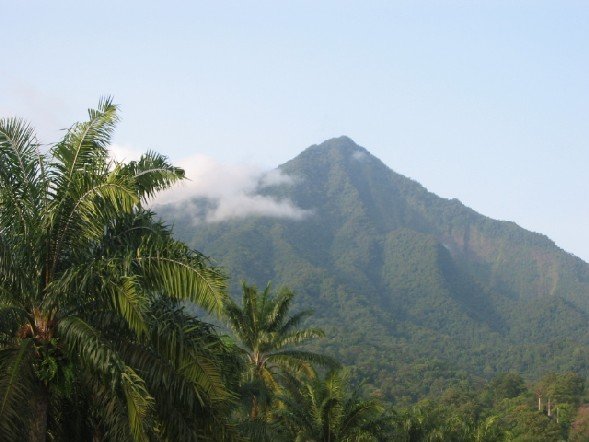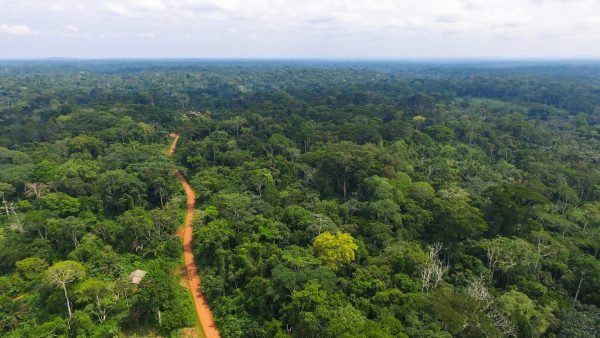Hello @Steemians accept worm greetings from this end, thank you @belenguerra, @worldgeography. Let me talk about season in my country and my FOVORITE season. Here Lying wholly within the tropics, the country is hot throughout the year; mean annual temperatures range between the low 70s and low 80s F (within the 20s C), although they are lower in areas of high elevation.

The incidence of precipitation depends largely on the seasonal movements of two contrasting air masses. The first is a dry continental tropical air mass, which originates over the Sahara and is associated with hot, dusty weather. The second is a warm and humid maritime tropical air mass that originates over the Atlantic and brings rain-bearing winds. Precipitation decreases from south to north. Along the coast, the rainy season lasts from April to November, and the relatively dry season lasts from December to March, right now, we're expecting our first rain. A transition period from March to April is marked by violent winds. The mean annual precipitation level of more than 100 inches (2,500 mm) occurs in about 150 days. In the central plateau region, precipitation decreases to about 60 inches (1,500 mm).

There are four seasons—a light rainy season from May to June, a short dry season from July to October, a heavy rainy season from October to November, and a long dry season from December to May. But my favorite season is from October to November, this season help us to increase our farm produce and this supply through out our national territory. The north, however, has a dry season only from October to May and an average annual precipitation level of about 30 inches (750 mm). The wettest part of the country lies in the western highlands. Debundscha Point on Mount Cameroon has a mean annual precipitation level of more than 400 inches (10,000 mm)—an average rarely attained elsewhere in the world—most of which falls from May to October.




Plant and animal life
The hot and humid south supports dense rainforests in which hardwood evergreen trees—including mahogany, ebony, obeche, dibetu, and sapelli—may grow more than 200 feet (60 metres) tall. There are large numbers of orchids and ferns. Mangroves grow along the coasts and at the mouths of rivers. The rainforest gives way to the semi-deciduous forest of the central region, where a number of tree species shed their leaves during the dry season. North of the semi-deciduous forest, the vegetation is composed of wooded savanna with scattered trees 10 to 60 feet (3 to 18 metres) high. The density of trees decreases toward the Chad basin, where they are sparse and mainly of Acacia species.


The tropical rainforest at elevations between 4,000 and 8,000 feet (1,200 and 2,400 metres) differs from that of the lowlands: the trees are smaller, are of different species, and are festooned with mosses, lichens, and other epiphytes. Above the rainforest zone are drier woodlands, tall grasslands, or patches of mountain bamboo. Above about 7,800 feet (2,400 metres) in the interior and above about 10,000 feet (3,000 metres) on Mount Cameroon, short grasses predominate.


The country’s dense forests are inhabited by screaming red and green monkeys, chimpanzees, and mandrills, as well as rodents, bats, and numerous birds—from tiny sunbirds to giant hawks and eagles. A few elephants survive in the forest and in the grassy woodlands, where baboons and several types of antelope are the most common animals. Waza National Park in the north, which was originally created for the protection of elephants, giraffes, and antelope, abounds in both forest and savanna animals, including monkeys, baboons, lions, leopards, and birds that range from white and gray pelicans to spotted waders. To the south lies Dja Faunal Reserve, one of the best-protected rainforests in Africa and a reserve renowned for its biodiversity. In the late 1980s the reserve was designated a UNESCO World Heritage site.

Cameroon seasonal chenges bring about our daily lives and life continue in cycle.

Hello dear @tume, I'm very sorry to have to tell you this, but plagiarism it's not allowed in our community, non in Steem Geography, neither in the entire #steemit ecosystem.
Please, my dear friend, try to write this in your own words.
Plagiarism is when you copy someone's text. It can be written here on Steemit, it can be from some newspaper, or from some website.
I have to tell you this for you to improve your work here.
Greetings,
Belén
Downvoting a post can decrease pending rewards and make it less visible. Common reasons:
Submit